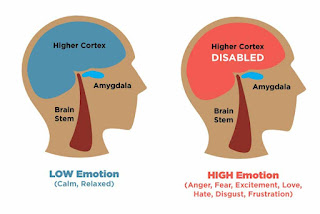Language and Amygdala Hijack

Cultural practices acknowledge taboo words. Taboo words are words or phrases that are constrained because of social norms. In English, taboo words are classified into three categories: First is dirty words. They are concerned about sex and excretion such as bugger and shit. S econd is words related to the Christian religion such as Christ and Jesus. Third is words that are used in animal abuse. In other words, we call a person by the name of an animal, such as bitch. Bilinguals may have different degree of emotionality for L1 and L2. In some cases, bilinguals tend to have a stronger emotion when speaking or listening taboo words in their first language compared to their second language. Some show greater ease in expressing taboo words in their second language. This is applicable if their second language is acquired early. In this context, AoA (age of acquisition) plays a significant role to what extent the second language speaker uses their first or second language in expressing their